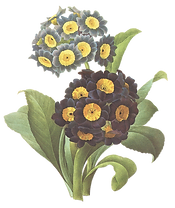Digging Deeper
- Cynthia Thomas
- Aug 23, 2016
- 3 min read

Spinach is feast or famine in our household.
My husband likes to grow it from seed and one little packet makes a LOT of plants. Did you know that now is the time to get your crop started?
Spinach is in the family of cold-weather crops. They prefer cool temps to hot and actually bolt (go to flower) and get more bitter as the summer season progresses. Don’t start your spinach seeds in June, start them now.
And what’s great about starting a fall crop is that these plants will actually give you two full seasons of salads. If you get them established in late summer, you can pick leaves off all the way until hard freeze. (I actually prefer the taste when the leaves have been a little chilled and crinkle up).
Leave the plants in the ground over the winter and they will rejuvenate as the temps rise and you can start eating them again – usually until the 4th of July.
A plant that takes 2 years to complete its life cycle is known as a biennial. Pansies, parsley, cabbages are a few you may be familiar with. Just think how many plants get sold for merely one growing season, when they are good for two?
I don’t want to blame nurseries for misleading the average home owner, but the fact remains; we get what we ask for. If I buy pansies in the spring because I simply can’t resist their romantic colors and delicately scalloped flowers and have to pull them up a few months later when the heat sets in, I have shortchanged myself.
And if I buy broccoli or brussel sprouts or spinach seeds and don’t read the directions to see how many days until they reach maturity, I will likely find I run out of time before the heat causes them to wilt. It may take a little more time and effort in the planning stage, but learning a plant’s characteristics will ensure I get the best results.
‘But I’m no farmer,’ you may be saying.
I get that. Most of the lessons I’ve learned in the garden, I’ve learned the hard way…by making mistakes and then doing my research.
What growing spinach has shown me (besides that I like eating a vegetable that I grew up thinking was gross), is to follow the directions rather than follow my instincts. If I just listen to my stomach that tells me summer is for salads then I will likely buy greens when I see Lowe’s puts them out for sale and get one season of marginal production.
This is where mistakes can be useful.
If I pay attention to the yield and see that something was lacking, my disappointment can be the catalyst for me to consider my efforts more carefully. Whether it’s reading the packet, talking to an experienced gardener or looking up information on the internet, there is a wealth of knowledge waiting for those who want to find it.
It’s one of the surprising pleasures of gardening – the more I try and learn, the more I share, the more I want to try and learn and meet others who want to share – it’s a veritable feast.
When you think of the difference; reheating a frozen vegetable that was thawed and strained from all its nutrients to growing a seed, harvesting the leaves, tasting the sunshine stored in its cells, trying fresh recipes and sharing with the neighbors, isn’t it worth digging a little deeper?
StartFragment"Look deep into nature, and you will understand everything better." –Albert EinsteinEndFragment























Comments